Psych Ops
“Physically, there’s very little difference between athletes who win Olympic gold and the rest of the field. It’s like the SEAL candidates we see here. Terrific hardware. Situps, pushups, running, swimming – off the charts, superhuman. But over at the Olympic center, the sports psychologists found that the difference between a medal and no medal is determined by an athlete’s mental ability. The elite athletes, the Tiger Woodes, the Kobe Bryants, the Michael Jordans – this is what separates them from the competition. Knowing how to use information.”
– Chris Lambertsen US Navy SEAL1
Tiger Woods and the US Navy SEAL’s are cultural icons in the United States. Children have long imagined themselves being like Tiger Woods, pumping their fists in the air on a Sunday evening while wearing a red Nike polo. Likewise, children who grew up playing “army” have probably day-dreamed about one day joining one of the most elite military units in the world, the US Navy SEALs. With movies like G.I. Jane, and golfers like Michelle Wie on the LPGA (Ladies Professional Golfers Association), we know these dreams has been dreamt by little girls as well. The lore of both icons can fill an interested mind with many curiosities. Like, who names their kid Tiger? Or, why is one of the most feared military units in the world named after a cute sea mammal?
In regards to Eldrick Tont Woods, his father Earl nicknamed him Tiger, after a lieutenant colonel in the South Vietnamese Army. Earl credited this man with saving his life twice during the war in Vietnam. Earl Woods recalled how Lt. Col. Nguyen Phong was tenacious in his approach to combat tactics. Respecting him as a fellow warrior, Earl nicknamed the colonel Tiger.2 Earl Woods was a soldier in the United States Army, serving as a Green Beret during the Vietnam War at the not so young age of thirty-two. He accomplished this large feat not long after finishing Ranger School and Airborne School. Earl would also go to Alaska for advanced cold weather survival training, just like the US Navy SEALs do in Kodiak, Alaska.3 Green Berets are not US Navy SEALs, but both are elite units that carry out different missions. Many have wondered whether the root to Tiger’s obsession with the Navy SEAL’s comes from the fact that the man who raised him was a Green Beret.
In 2007, Tiger Woods made over half a dozen trips to visit the US Navy SEALs. Tiger’s coach Hank Haney recalled how the military was becoming a central figure in Tiger’s world at this time, and many within Tiger’s circle began to worry about the distractions it had on his playing. Visiting the SEALs in Coronado outside of San Diego was one of Tiger’s first public appearances with a large gathering from the SEAL community.
“If I hadn’t been in golf, I would have been here with you guys. When I was younger, I always dreamed of being a Navy SEAL.”
– Tiger Woods4
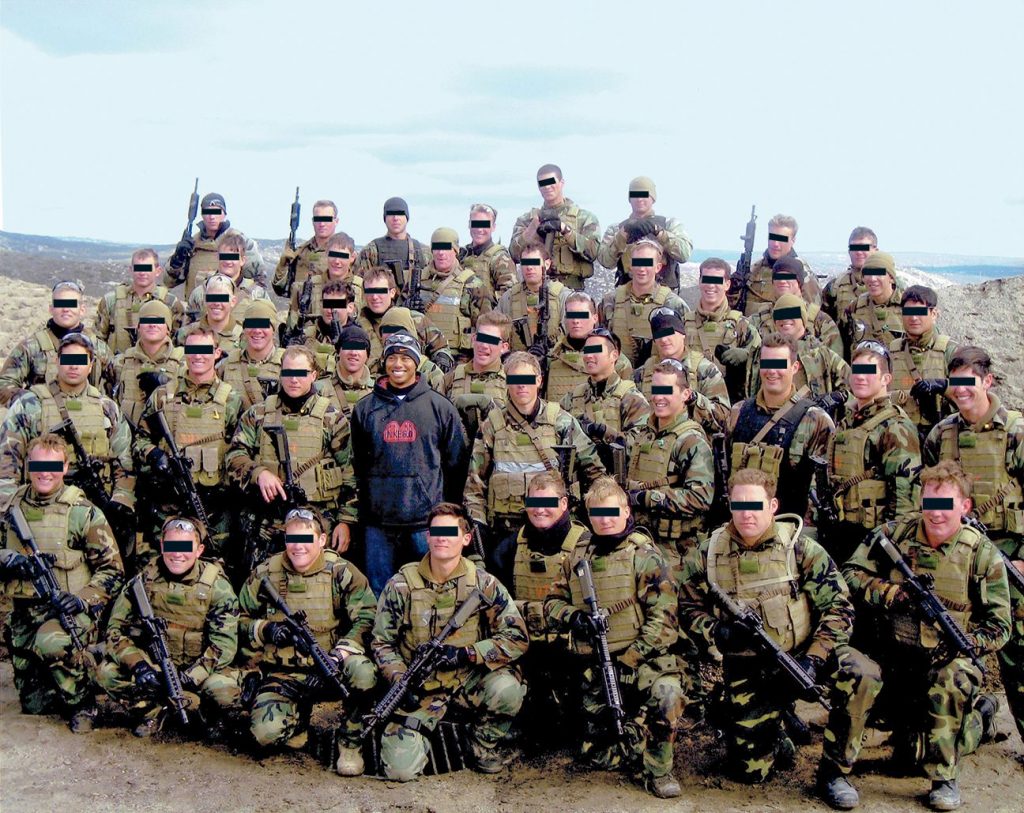
Again and Again (Hyper-Focused)
The high-risk missions that US Navy SEALs are known for are exactly what they sound like: dangerous. It is the success of these missions that add to the myth-like perception that SEALs are superhuman. Movies like Zero Dark Thirty and Lone Survivor have brought to the movie screen a depiction of what these high-risk missions can look like, and how stressful it can be on a person’s mind. The US Armed Forces have done countless hours of research on the psychological stresses of war on its combatants. People under high levels of stress are more likely to panic if they are not prepared. Preparation comes in different forms of both psychological and physical fitness. What stresses one individual does not stress out another, and it is impossible to fully predict how a soldier will react in every situation. Still, the US Navy believes that it is possible to conquered both fear and stress by repeatedly confronting ones fears head on.5 In 1956, at the direction of the Department of Defense (DOD), the US Armed Forces started to implement the Biderman resistance training model, in an attempt to incorporate stress inoculation training.6 To the outside viewer, US Navy SEALs operate at a level of courage that is baffling. This is achieved by the SEALs by preforming the same difficult actions in the mist of extremely dangerous environments, repeatedly over and over. The kill house is one of those simulations. With a mountain of psychological studies conducted throughout the DoD, the SEALs have incorporated a skillset that has become known as the Seven Fear Suppressing Techniques to overcome these stresses. The first step is Segmenting Goals. How do you eat an entire elephant? One bite at a time. Many SEAL candidates never becomes SEALs because they get overwhelmed by selection process. Segmenting Goals is a technique to combat that mental fear. Step two is Emotional Arousal Control. When faced with threats, the chemical process in our brains can make it impossible for our bodies to function, and in war this problem can be fatal. To overcome this, Navy SEALs use the 4×4 breathing technique to trick their minds into a state of calmness, so that they can continue to function in a high stress environment. The third step in the process is Visualization. Visualizing an operation over and over again allows for operators to react to a new stressful experience as though they had already done it before. This ability adds confidence and calmness in the midst of uncertainty. Positive Focus Within, is the fourth step in the process. This technique is meant to keep the internal “conversations” one experiences as positive ones. This is an important skillset when it is hard to find positivity in stressful situations. Fifth on the list is Emotional Separation. Unfortunately the nature of war is loss of human life. This reality takes a heavy toll on soldiers who witness the death of their brothers and sisters in combat. However, when an operator is killed in the field, there is still a mission to carry out. Emotional Separation helps SEALs push past the grief that comes with losing someone close, so that they can finish the mission. Plan for the Unexpected. This sixth step is similar to visualization, in that a having a contingency is an effective way to combat stress when the initial plan does not survive the battlefield. Last, but not least, is Concentration and Focus. It is vital to the mission of US Navy SEALs that they stay focused on the mission, and to stay honed in on the target despite any distractions that come as a result of stress and fear.7
At the age of twelve, Tiger Woods was introduced to Jay Brunza, PhD, and navy captain. Brunza was a psychologist who had been a faculty member at the US Naval Academy in Annapolis, Maryland. Now Brunza was working with kids who were fighting cancer and undergoing radiation treatments. Brunza’s job was to help the children through a version of hypnosis to help the patients visualize how to overcome their suffering. The technique was called “attentive awareness.”8 By the age of thirteen, Tiger started to work with Brunza and his use of hypnosis to become a better golfer. This was all part of the famous “Woods Finishing School” that Earl talked about. Earl would conduct psychological warfare techniques with Tiger that he used to teach soldiers as a Green Beret. Tiger needed to be tough if he was going to succeed.
“The psychological training that my father used inured me to whatever I might have to deal with in golf. He taught me to be completely aware of my surroundings, while maintaining complete focus on the task at hand…he had trained me to be what he sometimes called a ‘cold-blooded assassin’ on the course, by applying the principles he had learned while in the military.”
-Tiger Wood9
Indeed, Earl would brag about how he would do things to try to irritate Tiger while on the golf course, like walking over Tiger’s line, or rattle change in his pocket. This was just the beginning of it all. When Tiger was just three years old, Earl was trying to teach him how to visualize his shots on the golf course. Earl would say it was one of the hardest things to teach Tiger. In Earl’s mind, Tiger needed to develop what the military refers to as a Standard Operating Procedure (SOP). The hope was that golf shots would become easier though visualization and repetitiveness.10 Tiger would use another psychological tool to help him develop his mental toughness. Tiger would listen to positive self-help tapes his father gave him on cassettes. On Tiger’s bedroom wall hung a piece of paper reminding him of who he was. I believe in me, I will own my own destiny, I smile at obstacles, I am first in my resolve, I fulfill my resolutions powerfully, My strength is great, I stick to it, easily, naturally. All of this, of course, was on top of the countless hours of practicing his swing and putting. Over and over again, Tiger hit the same shot to develop muscle memory.
“He would begin a typical day by waking up at six and working out until eight. After he showered and ate breakfast, we would meet on the practice tee at nine for ninety minutes of hitting balls. From 10:30 to eleven he would practice putt, then play as many as nine holes on the course until noon. After a one-hour lunch break, we’d meet at one p.m. for an hour of short game work, followed by another ninety minutes of hitting balls. From 3:30 to 4:45 he’d play nine holes, and then return to the putting green until six. This would be followed by an hour of shoulder exercises before retiring for dinner at seven. Tiger respected practice. It was sort of his church…”
– Hank Haney Tiger’s Golf Coach11
The Fog of War
After breaking records as an amateur golfer, there was exceptional expectations placed on the pro career of Tiger Woods. Tiger did not fail to live up to the early hype, when he became the youngest player to win the Masters Tournament in 1997. Tiger was twenty-one years old, and even before the win at Augusta, Tiger was taking the world by storm via Nike television ads. One might think that confusion only comes after a failure, but wild success can cloud the vision just as easily. When Tiger won his first Green Jacket in 1997, a media frenzy kicked up around the young golfer in a new way. Interview requests with the President, with Oprah, and with Larry King were among those to flood in all at once. Earl Woods did his part as a salesman to bolster the hype around his son Tiger, telling the world that Tiger was a special gift for all humanity. According to Earl, Tiger was going to transcend the game of golf, and change the world in a deeper way. Tiger was seen as the man that was going to tear down the racial barriers of golf, and that would overflow out into society. The Masters Tournament is well known for its deep racial prejudicial past. For Tiger to go and not only win there, but also destroy the field, it was seen as a sign of the change that was coming. Not long after his win, Tiger went on Oprah, and naturally the televised discussion turned to the issues of race surrounding golf. When Oprah asked Tiger what he considered himself to be, his answer set off a firestorm of anger and disgust from the black community: Cablanasian.12 Tiger’s reluctance to fully claim his black heritage was considered a monstrous betrayal. In the blink of an eye, or the clip of one soundbite, the cheers of a black community turned on Tiger. In hindsight, Tiger Woods was not interested in being the next Nelson Mandela; he wanted to play the game his father had molded him to play. Tiger just wanted to play golf. He was not interested in being the center of a rallying cry for those overlooked in society. Some even went so far as to compare his actions as similar to O.J. Simpson who was notoriously regarded as a black man who wanted to get as far away from being associated with racial tensions. So, Tiger being Tiger, he turned his focus back to golf, back to the world that he was in complete control of.
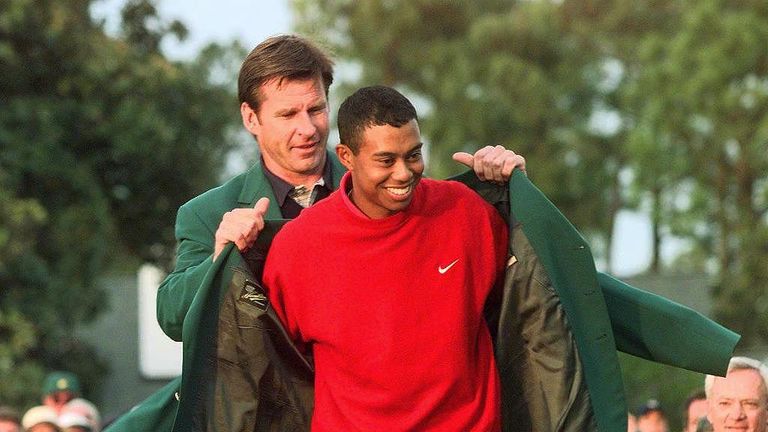
Flying to the X (Adaptable)
A Navy SEAL understands that the battlefield is fluid and not static. The battle conditions are never the same, and the enemy is evolving as well. As mentioned before, the Navy SEALs are constantly planning for the unexpected. For Navy SEALs to accomplish their mission, it is vital for them to be adaptable to the ever changing battle environment. In Mark Owen’s book No Easy Day, he explains how after two deployments in Iraq, his third would be completely different.13 The enemy had evolved since his first two deployments. In the missions previous to his third deployment, the Navy SEALs would insert themselves into the battlefield by “flying to the X.” By his third deployment, the Navy SEALs would start a few miles away from the X (the target), so that they would keep the element of surprise longer. This meant that the SEALs would have to walk a few miles before carrying out their mission, but the element of surprise was worth the investment. The Navy SEALs are successful on the battlefield because they know that what works today may not be the best approach tomorrow.
Most people would be satisfied to make it to the PGA Tour to begin with, much less to win a tournament. Then again, the dream every pro golfer chases is that Green Jacket awarded to the best golfer at the Masters Tournament in Augusta. There are many exceptional golfers who never lay hold of the ever-elusive Green Jacket. So when a twenty-one year old becomes the youngest to ever do it, you might think that would be enough for some people. That wasn’t the case for Tiger Woods. Shortly after winning his first Masters Tournament, the media frenzy was crazy. When Tiger finally got some time away from the circus, he did something no one saw coming. He decided to change his swing. That’s right! Tiger had just won on the biggest stage pro golf had to offer, and his first instinct was to find a way to get better. Tiger took a trip to Golf Channel Headquarters in Orlando, Florida, to watch tape of his swing at Augusta.14 While watching the tape, he realized his swing was not fully optimal, and knew that if he wanted to be the best of the best, he had to make a change and become even better. The decision to change his swing was met with skepticism; not everyone was convinced it needed to happen. However, if Tiger Woods had not make this change so early on in his career, Tiger probable never would have dominated the British Open just two months after the passing of Earl Woods.
Brothers in Arms
Golf is one of those sports that most people consider to be an individual sport. Despite all the help from caddies and swing coaches, a golfer must execute his game on his own. The father-son duo of Earl and Tiger, has challenged some to re-think the notion of Golf being an individual sport. While Tiger’s mother Kultida had a major influence on her son’s upbringing, without a doubt it can be said that Tiger Woods would not be the golfer we know without Earl Woods. The father-son embrace at the end of Tiger’s first Masters Tournament win in 1997 showcased just how big a role Earl played in Tiger’s life. Both men referred to the other as their best friend. Many have shaken their fingers at Earl for being more of a best-friend to Tiger than a responsible father. Earl was involved in every aspect of his son’s life since birth. A lot of fathers and sons have spent hours together in their garage working on old cars, but Tiger sat in a high chair eating his supper while watching his father hit golf balls repeatedly into a net.15 The boy would grow up to do the same thing as his father, putting in long hours of repetitive practice in that same garage. It was not long until Tiger was out on the course with his father playing; it was his reward for doing all his multiplication times tables. Tiger would call his dad at work to ask his father if they could play when he got home from work. The game of golf was Tiger’s connection to his father, and he learned to emulate his father’s life from a very young age.
Golf would not be the only thing Tiger would emulate from his father’s life. Much has come to light in wake of the Tiger Woods sex scandal, and about his father Earl’s checkered past with women. Court records show that Earl hadn’t legally divorced his first wife before marrying Tiger’s mother. Earl Woods worked as a golf coach, and according to Tigers old coach, Earl occasionally enjoyed the company of young ladies for private cocktails in his Winnebago, just yards away from where Tiger was practicing. Later, while traveling with his father Earl for summer Golf tournaments, Tiger called his girlfriend crying, upset that his father had met a woman and was going out with her for the night.16 Despite knowing and despising his father’s transgressions against his mother, Tiger would eventually imitate those same behaviors of his father.

Only a month after winning the 2004 Masters Tournament, Tiger Woods went to Fort Bragg in North Carolina for a four-day Army special-operations training exercise. Tiger participated in parachute jumps, hand-to-hand combat exercises, and long distance runs in combat boots, all while Earl Woods watched from the sidelines like it was another golf tournament. It was the beginning of Tiger chasing down Earl’s military accolades. Less than two weeks after the passing of Earl, Tiger absconded to a city named Campo near the Mexican border. Camp Michael Monsoor is situated in a very mountainous region that looks a lot like Afghanistan. It was here that Tiger did what few civilians have ever done; he joined the Navy SEALs in the kill house. Tiger was taught how to clear a room, how to establish lanes of fire, and how to check his corners, all while being fired at by Navy SEAL’s. One of the SEAL instructors asked Tiger why he was there after losing his father just weeks prior. Tiger said that Earl had told him that he would eventually be a golfer, or a special ops soldier; those were the only paths available for him.17 Emotional separation is a skill taught to Navy SEALs who can witness the loss of their friends in combat operations.18 This trip to Campo a few weeks after the passing of Earl Woods could have been Tiger utilizing the same skillset taught to Navy SEALs. The year Earl Woods passed away in 2006, Tiger Woods was the best of the best on the PGA Tour.
The Teams (Emulous)
Established in 1962, the US Navy Seal Air and Land Teams, or US Navy SEALs, are considered to be at the forefront of US Special Operations. When an individual makes “The Teams,” they are joining the upper echelon of the US Armed Forces. More than a military unit, “The Teams” are a brotherhood. The operation tempo of US Navy SEALs requires individuals to spend more time with their brothers in arms than with their families at home. Basic Underwater Demolition SEAL Training (BUD/S), is the crucible that forms the initial bonds of future NAVY SEALs as brothers.19 Before anyone can call himself (or herself) a US Navy SEAL, he or she must first emulate the actions of those who have come before them, and complete BUD/S.
When we lose those that we are close to, we tend to hold on to the pieces of who they were to fill the void left in their absence. Tiger and Earl shared a passion and love for golf since Tiger was in a high chair. By the time of Earl’s death, Tiger was already living a double life with multiple lovers like his father had done. Entering the kill house was the last step Tiger needed to emulate Earl’s life; it would be here that Tiger would come to learn whether he had his father’s military prowess. Earl and Tiger, father and son, best friends, and now brothers in arms.
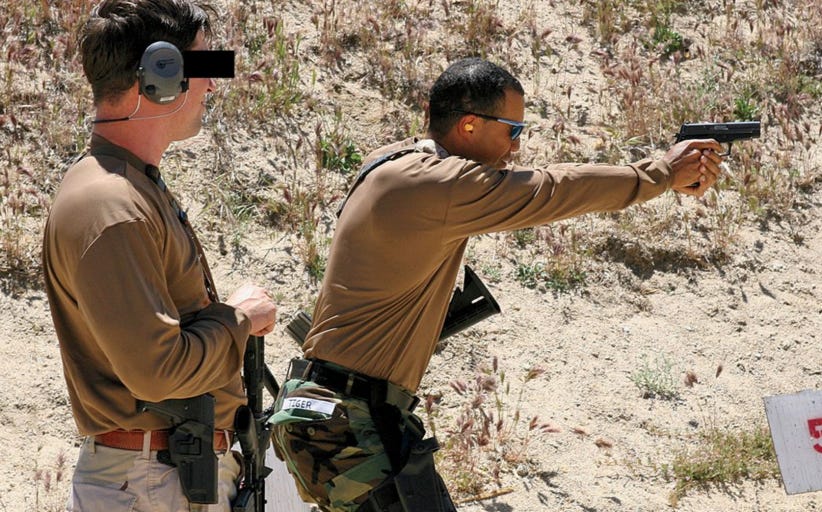
Making The Cut…Above
Six weeks after the death of Earl Woods, Tiger returned to golf for the US Open. The tournament was held at Winged Foot Golf Club, and for the first time in thirty-seven majors as professional golfer, Tiger missed the cut to play. If anyone wondered whether Tiger Woods was falling off the top of the mountain, the next tournament Tiger played in would put those thoughts to rest. A month after the US Open, Tiger captured his third Claret Jug at the British Open where he shot eighteen under par to win. “Sheer perfection,” was the phrase used to describe Tiger’s play and ball-striking at the British Open. Tiger dedicated his performance to his father Earl, and what a performance it was. Tiger’s swing coach said it was the greatest display of iron play he had ever seen in his life. There was no doubt, Tiger Woods was still the best golfer on the PGA Tour. Judging by the British Open and all his past victories, it seemed that Tiger would be ranked as golf’s number one golfer forever. Any pro golfer will tell you that making the PGA as a pro is no easy feat, and it takes hard work and dedication. However, the level of golf that Tiger Woods was playing at was at a level unrivaled by any other golfer on the field.20

DEVGRU (Optimizer)
United States Naval Special Warfare Development Group, is the nine-month selection and training course for SEAL Team Six. Only the best candidates earn the coveted Trident after completing BUD/S, and become Navy SEALs. Like cream rising to the top, it’s only the best of the best SEALs, that make it through the Green Team course, and move on to another level. Many SEALs regard this honor as the pinnacle of their careers, making it to SEAL Team Six. There is something to be said about those who are never satisfied with their current place in life. For those SEALs who are not content with just being a SEAL, DEVGRU is the only career path to optimize all their skills.21 It is fair to say that a Navy SEAL who makes it to SEAL Team Six is never satisfied with his past accomplishments. They are always on the move, forever in the hunt, no matter how successful they are. Their desire to win is insatiable. It is not enough to beat their enemies in a fight. The optimized SEAL Team Six member wants to completely annihilate their enemy.
From the very beginning, Tiger Woods was taught to not be satisfied with achieving par. Even more so, Tiger was taught not to be content with coming in under par. There is always room for improvement; it’s the only way to dominate the competition. When Tiger started to play golf with his father, Earl would assign Tiger his own “par” for each course due to Tiger being so young. Par is the number of shots a normal golfer should take to be able to get their ball into the hole. Since Tiger was on the course before he was even in kindergarten, Tiger had his own par to shoot for. Earl recalls Tiger not being satisfied with par; he always wanted to get a birdie. This was the birth of Tiger’s competitive edge to not be satisfied. When Tiger was six under par, he wanted to be seven under par. The nature of Tiger to want to dominate his competition was ingrained long before anyone knew his name. Tiger had reached the heights of the golf world. He had won every major tournament there was to win at a breathtaking pace. At this point in his career, there was no doubt he would catch Jack Nicklaus for all-time wins, and major victories. Tiger Woods never openly talked about catching Jack, but with everyone saying that Tiger Woods was the best golfer ever to grace the world, everyone assumed that Tiger was naturally chasing all of Jack’s records. It probably was Tiger’s goal to eat up every record possible on the golf course in order to cement his legacy as the greatest to ever play the game. But, death has a way of forcing us to reevaluate our priorities in life. The revelation that Tiger told his caddie Stevie Williams, “Stevie, I think I have had enough of golf, I’d like to become a Navy SEAL,” took the world by surprise.22 Those in Tiger’s inner circle grew worried after Earl’s death, because Tiger was seriously considering joining the Navy despite being too old. Tiger had made friends within the SEAL community, even hiring one to become his bodyguard. When Williams reminded Tiger that he was too old to enlist, Tiger already knew about the age waivers available in certain circumstances. Tiger was spending more time with the Navy SEALs, “knocking out” qualification markers to be a SEAL. There was no doubt Tiger Woods, the greatest athlete on the planet, was ready to walk away from the sport he was dominating, and leave it all behind to become a Navy SEAL. Hank Haney recalls that Tiger rarely spoke about his father Earl when he was alive. Now that Earl was gone, Tiger spoke about Earl at an increasing rate, always talking about Earl’s military history.23 Many questioned whether Tiger Woods had what it took to be a Navy SEAL. According to Aaron Silton, a former Marine Corps Raider, the short answer was yes. “Being a special operator is no more than a mindset. In training or on a mission, it’s not being able to quit. And Tiger has no quit in him.”24
Embrace the Suck
Don Henley was a prophet of the times we live in when he released the song Dirty Laundry in 1982. Oh how we love to see our heroes fall from the heights. For years, Tiger Woods was able to keep his double life out of the press. He had used his wealth to keep his dirty laundry a secret, protecting the clean image Tiger had set up of himself. When the world learned of the many women in Tiger’s life, friends and sponsors walked away from Tiger Woods. Accenture, AT&T, Gatorade, Gillette, Golf Digest, Procter & Gamble, and Tag Heuer all backed away from Tiger Woods. The only sponsors left standing for Tiger were Nike and EA Sports. The hits kept coming after the revelation broke about the many women in Tiger’s life. It would soon be revealed that Tiger and his friend Alex Rodriquez were involved with steroid abuse. Tiger’s marriage to Elin wouldn’t last the year, as she moved out of the house before Christmas. After Christmas, Tiger would check himself into a sex addiction clinic in Hattiesburg, Mississippi. Of course, not everyone was buying into the sex addiction, citing that it was an attempt to excuse Tiger’s poor behavior. Comedians took to the stage to share the observation that if Tiger Woods was Cablanasian before the scandal, he was surly being treated as a black man now. Like most celebrities caught in scandal, a press release was scheduled where Tiger Woods apologized to the world for his behavior. Very few bought the lack of sincerity detected in his words. The world was turning cold on Tiger, including those who Tiger had made successful with his own success. After finishing rehab Tiger planned his return to golf at the Masters Tournament. What followed rubbed many people the wrong way, even those who knew Tiger had been wrong. William Payne, the Chairman of the Augusta National Golf Club, used the annual address to the media as a platform to shame Tiger Woods.
It is simply not the degree of his conduct that is so egregious here. It is the fact that he disappointed all of us, and more importantly, our kids and our grandkids. Our hero did not live up to the expectations of the role model we saw for our children. Is there a way forward? I hope so. Yes, I think there is. But certainly, his future will never again be measured only by his performance against par; but measured by the sincerity of his efforts to change.”
-William Payne Chairman of the August National Golf Club25
Even those who were not happy with Tiger Woods took exception to these words. Never in the history of sports had an athlete been treated like that. The comments felt deeper than a chastisement on his conduct; it felt racial. Tiger took his medicine, even if the dose was a little heavy handed. Tiger just wanted to return to the place where he was happy, the golf course. Tiger’s life would never be the same, and many wondered if he would ever rise from the ashes.
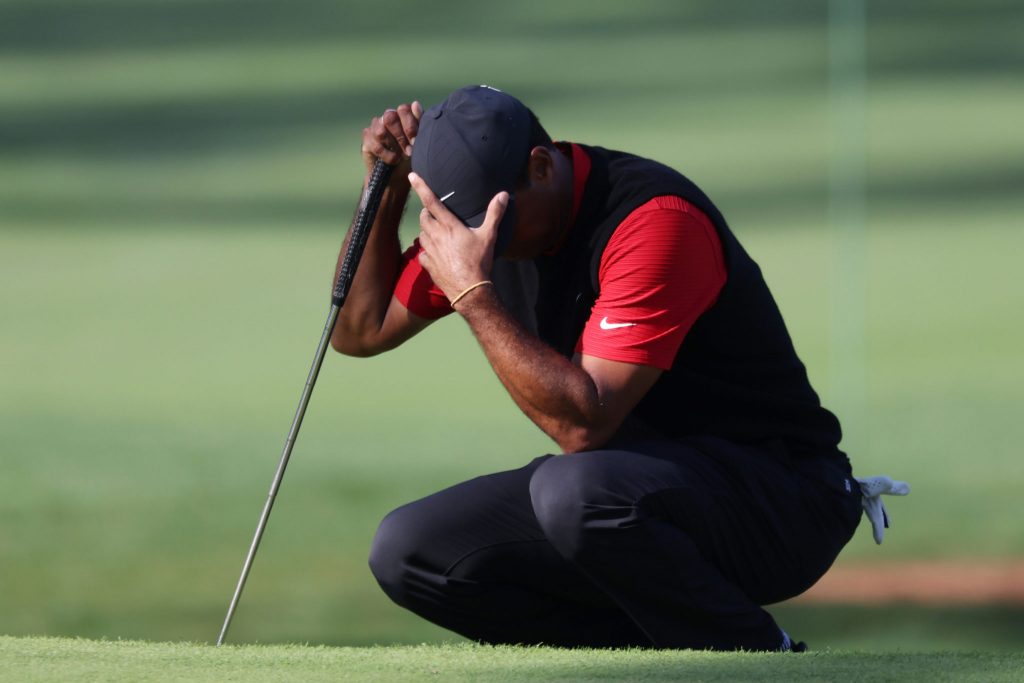
Finding Comfort in being Uncomfortable (Resilient)
SEAL training, beginning from day one at BUD/S, is designed to create warriors…It is a sorting process that finds young men who would rather die than quit, then instills them with a relentless desire to fight and win as a team…it is a ruthless process; for every man who succeeds, four men will fail. It’s a rendering for men of character, spirit, and a burning desire to win at all costs.
-Dick Couch26
There is no way to make it as a Navy SEAL if you are not willing to be uncomfortable. The ability to weather a storm is arguably the greatest skillset an individual needs to have in order to make it through BUD/S, and to have a successful career. The historical drop-out rate from BUD/S sits at seventy-five percent.27 Hell week is the evolution within the program that is designed to weed out the pretenders. Sleep depravation, extreme cold, hunger, and intense foul smelling mud are the tip of the iceberg. Candidates who are seeking a place in “The Teams” need to come to grips with the reality that each day will bring new problems to solve, turmoil, setbacks, and many failures. For the mentally resilient, failure is a welcomed teacher, pain and discomfort the ever important educator. At the end of the day, Navy SEALs make a living being uncomfortable. When you find yourself in the middle of nowhere, with just your brother SEALs at your side, you need to know that the SEAL next to you will be there through thick and thin. Regardless of whether it is at BUD/S or Green Team, Navy SEALs know that those who share the trident have all gone though hell to get to where they are, and they can trust each other with their lives.
Tiger Woods reached the top of the golf world with a multitude of support and cheers. If he was going to reach the top again, the journey would be much colder and lonelier. Tiger is no stranger to competing in discomfort. A year before the news broke on Tiger’s secret life, Woods was at the 2008 US Open held at Torrey Pines. Tiger was on the prowl for another win that year, but the Tiger was hobbled with a bad knee. It is speculated that the knee injury came from a training session with the Navy SEALs. Tiger’s caddie recalled how Tiger swung at the ball, only to be on the brink of tears due to the jolts of pain shooting up his knee. Tiger’s caddie couldn’t help but ask Tiger if the tournament was really worth it. The one-legged golfer name Tiger Woods had a response.
F___ you. I’m winning this tournament.28
Tiger Woods ended up going the distance at that tournament, winning in sudden death after two eighteen hole playoff rounds. Immediately after the tournament, Tiger Woods was off to his surgeon. Now that the world was standing against Tiger Woods, it was going to take that same will power, if not more, to make it back to the top. Tiger would hit the tour after the 2009 bombshell. He wasn’t the same golfer, it was obvious. His swing lacked the same explosion it once had. Tiger’s injuries were mounting up, and the pro golfer soon became addicted to painkillers. Tiger kept showing up to tournaments and swinging his golf clubs, but he didn’t land any wins. Tiger lost his rank as the number one golfer in the world, and many doubted he would ever win another tournament again.
Mission Accomplished
After spending ten years in the wilderness, Tiger Woods arrived for the 2019 Masters Tournament. Despite the drought in wins, Tiger had kept at the sport he loved. In April, Tiger would throw his hat in the ring again to duke it out with the best in golf for a shot at the coveted Green Jacket. Something seemed different this time from the very beginning. On-lookers who watched Tiger warming on the practice tee noticed that Tiger was crushing the ball long and straight. It resembled the Tiger of old when no other golfer could hold a flame to him. Was this the tournament that Tiger would stamp his name in the history books? Apparently some thought that his showing at the practice tees was enough evidence to believe he could actually pull it off. They would go on to place bets on Tiger Woods to take the 2019 Masters Tournament.

Geronimo (Persistent)
In September of 2001, the entire world stopped in horror, as the events of September 11th played out on news channels everywhere. The attack was taken as a declaration of war that would send men and women of the United States into harms way. Leading the charge in the war on terror was the US Navy SEALs. The organization behind the attacks had a name, and behind that name a face that would become infamous around the world. Usama Bin Laden would become the face of hate and terror the world would try and hunt down. After the initial attack happened, US troops were deployed to Afghanistan to hunt down the leader of the terrorist organization that killed nearly three-thousand people in a single day. Bin Laden was thought to be in the Tora Bora region of Afghanistan, and despite the amount of US troops hunting for him, Bin Laden managed to elude capture. Among those who Bin Laden managed to give the slip were US Navy SEALs. The hunt for Bin Laden was on. Intelligence services around the globe in multiple countries poured resources into hunting the man down. The hunt for Bin Laden looked to go unresolved. Navy SEALs led a raid on a compound that resulted in the deaths of a few SEALs, but Bin Laden was nowhere to be found.
For nearly ten years, the search for Bin Laden produced zero results. On May 11, 2011, that would all change. Intelligence assets led the Central Intelligence Agency (CIA) to a compound in Abbottabad, Pakistan. Before US Navy SEALs would conduct the raid that killed Usama Bin Laden, they built a mock up of the compound, and ran through the raid countless times. It was important to get the mission right. The SEALs didn’t want to be responsible for Bin Laden escaping again. The mission to kill Bin Laden wasn’t flawless. The unexpected happened when the helicopter carrying a SEAL team crashed in the courtyard of the compound at the very beginning of the raid. The SEALs adapted to the change on the battlefield, and continued to execute their mission. After years of searching, and a near catastrophic crash, “For God and country, Geronimo” was said over the radio. It was the code word to announce that the target was indeed Bin Laden, and that he was dead. The persistence of the intelligence community, and of especially the Navy SEALs, made it possible to finally bring to justice the man behind September 11th. After ten years of it looking as if Bin Laden would get away from the reach of the United States, he was gone at the hands of the Navy SEALs.
The ever famous 18th hole at Augusta is familiar to those who follow golf. It has been home to many cheers and many heart-aches. It had been fourteen years since Tiger had pulled off a win at Augusta. Many wondered if this was the day that changed all that. Tiger would end up only needing a bogey to win the tournament, though he did not know that when he tee’d off. Tiger remained focused till the finish. He did not get caught up in the moment of cheers from the gallery as he walked up 18. Tiger played conservative to ensure that the Green Jacket would be his. It had been eleven years since his last major tournament victory. The putt that brought it all to an end invited a deafening roar from the crowd. Tiger had done it. Tiger was back on top of the golf world. The emotion on Tiger’s face was noticeable. Walking up from the green he hugged his two kids, his mother, and girlfriend. Tiger had defied the odds by not giving up. He had all the opportunity in the world to just walk away from the game. He had already accomplished so much, but here he was. Rewarded for his persistence. Tiger was king.29
The Easy Day Was Yesterday
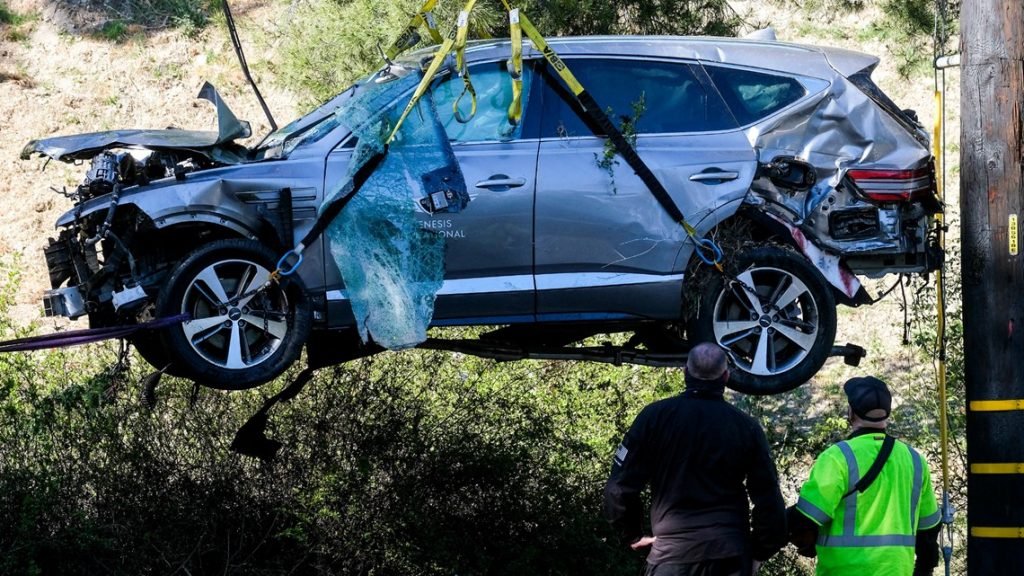
If you thought yesterday was hard, wait and see what tomorrow has in store. This mindset is adopted by Navy SEALs to push through adversity, and to never quit. Complacency is dangerous in the special operations community, and Navy SEALs have no time for it. This mindset may come across as negative thinking, but the SEAL community would say it helps them stay focused on pushing through the tough days ahead. It had seemed to the world that Tiger Woods was on the comeback. So much of his life had been restored. That restoration came out of hard work, and being mentally tough to push through the many obstacles in Tiger’s life. Watching Tiger play in a father-son golf tournament with his son seemed to be the icing on the cake after winning another Green Jacket in 2019.

News came that Tiger was involved in a major auto accident, and without fail people assumed the worst, that Tiger had relapsed into drug addiction. Tiger’s medical prognosis after the wreck seemed bleak. Tiger Woods suffered compound fractures to his tibia, and fibula. The golfing world had long given up on Tiger ever catching Jack Nicklaus records. Then after winning the 2019 Masters Tournament, there was a renewed speculation that maybe Tiger could catch Jack. The car accident seemed to wash all that optimism away in the media. Apparently, there is no one who could overcome the physical trauma suffered by Tiger Woods in that accident, that could make it back to the top of golf. However, if we study the history of Tiger Woods, we know that if there is anyone with the psychological strength to overcome this obstacle, it is Tiger Woods.

- Chris Lambertsen, Navy Seal Mental Toughness: A Guide to Developing an Unbeatable Mind (Coppell, Tx, 2016),58. ↵
- Earl Woods, Tiger Woods, and Pete McDaniel, Training a Tiger: A Father’s Guide to Raising a Winner in Both Golf and Life, 1st edition (New York: HarperCollins, 1997),XV. ↵
- Don Mann and Ralph Pezzullo, The U.S. Navy SEAL Survival Handbook: Learn the Survival Techniques and Strategies of America’s Elite Warriors (New York: Skyhorse Publishing, 2012),4. ↵
- Hank Haney, The Big Miss: My Years Coaching Tiger Woods, Reprint edition (New York; Enfield: Crown, 2013),140. ↵
- Chris Lambertsen, Navy Seal Mental Toughness: A Guide to Developing an Unbeatable Mind (Coppell, Tx, 2016),77. ↵
- Don Mann and Ralph Pezzullo, The U.S. Navy SEAL Survival Handbook: Learn the Survival Techniques and Strategies of America’s Elite Warriors (New York: Skyhorse Publishing, 2012),39. ↵
- Chris Lambertsen, Navy Seal Mental Toughness: A Guide to Developing an Unbeatable Mind (Coppell, Tx, 2016),79-89. ↵
- Jeff Benedict and Armen Keteyian, Tiger Woods (Simon & Schuster, 2018),34. ↵
- Jeff Benedict and Armen Keteyian, Tiger Woods (Simon & Schuster, 2018),36. ↵
- Earl Woods, Tiger Woods, and Pete McDaniel, Training a Tiger: A Father’s Guide to Raising a Winner in Both Golf and Life, 1st edition (New York: HarperCollins, 1997),12. ↵
- Curt Sampson, Roaring Back: The Fall and Rise of Tiger Woods, Illustrated edition (Diversion Books, 2019),90-91. ↵
- Curt Sampson, Roaring Back: The Fall and Rise of Tiger Woods, Illustrated edition (Diversion Books, 2019),35. ↵
- Mark Owen and Kevin Maurer, No Easy Day: The Autobiography of a Navy SEAL: The Firsthand Account of the Mission That Killed Osama Bin Laden (New York, New York: Dutton, 2012),68. ↵
- Jeff Benedict and Armen Keteyian, Tiger Woods (Simon & Schuster, 2018),161. ↵
- Jeff Benedict and Armen Keteyian, Tiger Woods (Simon & Schuster, 2018),19. ↵
- Jeff Benedict and Armen Keteyian, Tiger Woods (Simon & Schuster, 2018),65. ↵
- “The Secret History of Tiger Woods,” ESPN.com, accessed October 11, 2021, https://www.espn.com/espn/feature/story/_/id/15278522/how-tiger-woods-life-unraveled-years-father-earl-woods-death. ↵
- Chris Lambertsen, Navy Seal Mental Toughness: A Guide to Developing an Unbeatable Mind (Coppell, Tx, 2016),86. ↵
- Don Mann and Ralph Pezzullo, The U.S. Navy SEAL Survival Handbook: Learn the Survival Techniques and Strategies of America’s Elite Warriors (New York: Skyhorse Publishing, 2012),2. ↵
- Jeff Benedict and Armen Keteyian, Tiger Woods (Simon & Schuster, 2018),273. ↵
- Mark Owen and Kevin Maurer, No Easy Day: The Autobiography of a Navy SEAL: The Firsthand Account of the Mission That Killed Osama Bin Laden (New York, New York: Dutton, 2012),11. ↵
- Curt Sampson, Roaring Back: The Fall and Rise of Tiger Woods, Illustrated edition (Diversion Books, 2019),104. ↵
- Hank Haney, The Big Miss: My Years Coaching Tiger Woods, Reprint edition (New York; Enfield: Crown, 2013),144. ↵
- Curt Sampson, Roaring Back: The Fall and Rise of Tiger Woods, Illustrated edition (Diversion Books, 2019),104-105. ↵
- Curt Sampson, Roaring Back: The Fall and Rise of Tiger Woods, Illustrated edition (Diversion Books, 2019),121-122. ↵
- Dick Couch and Cliff Hollenbeck, The Warrior Elite: The Forging of SEAL Class 228 (New York: Three Rivers Pr, 2001),104. ↵
- Chris Lambertsen, Navy Seal Mental Toughness: A Guide to Developing an Unbeatable Mind (Coppell, Tx, 2016),9. ↵
- Curt Sampson, Roaring Back: The Fall and Rise of Tiger Woods, Illustrated edition (Diversion Books, 2019),102. ↵
- Curt Sampson, Roaring Back: The Fall and Rise of Tiger Woods, Illustrated edition (Diversion Books, 2019),227. ↵




26 comments
Joshua S Marroquin
This was an amazing article that I enjoyed reading. it was very informative about Tiger’s Wood dreams and his close relationship he had with his father. It was very amazing to learn how he had a dream of becoming a navy seal since he is famous for his golf skills all around the world. It is still crazy how the world turns out, since you might be good at oen thing but end up wanting to do something else.
Enrico Zorzin Onzi
Hello Ed. You wrote a very interesting article, and the sources you used just increased the reliability of it. As I am an soccer athlete, I completely understand what it means by dedicating the life to the sport. I believe that Tiger’s father had a great influence in the mindset Tiger built throughout the time. In general, we have good and bad moments in life, and I think this moments are much more intensified in an athlete life. In my opinion, what determines the success is how we respond to this events, and the capacity to keep improving. Tiger spent his life practicing to be better, and I appreciate the fact that he worked his mindset at the same level he worked physically. Sometimes, people do not understand that sports psychology is even more important than physical practices. When Tiger identified how was his state os mind where he could achieve his peak performance he just let it flow and things happened naturally towards success.
Ryan Romine
It is crazy that Tiger Woods had dreamed of being a navy seal, considering he is so good at something else. I also thought it was crazy that hypnosis was used on him to help his performance in golf. I think his dream of being a navy seal could have helped him become the golfer he is, because navy seal are tough an do not quit. That is probably something he thinks about when he is struggling on the course.
Maria Luevano
I think Tiger has such an interesting story, specifically with his father and their relationship. Tiger woods has been working all his life to be the best at something, and with the support of his father. However, with his father’s support came expectations and I think Tiger has always resented his father for pressuring him to be the best which is why he has always dreamed of a career in the military and being a Navy SEAL.
Alexa Casares
The title was everything! I enjoyed the extensive research, as someone who has never read about Tiger Woods outside of media headlines, it was interesting to see where inspiration comes from!
Gianna Salinas
This is a super interesting article. Growing up, I have always heard many things about Tiger Woods, especially from my father. However, I never knew that Mr. Woods longed to be a Navy SEAL. Super interesting and great research!
Roberto Soriano
This is a great read and very detailed with really good research. It is interesting to see this backstory on Tiger woods because as someone who doesn’t watch golf but is influenced by the sports world knowing about the background stories this successful athletes have is always fun. There always some things that make those stories remarkable too like for example in this case how he got the nickname tiger… not me thinking he was called Tiger the whole time.
Sophia Kussel
Firstly, I love your title– its perhaps the best one I’ve read so far, but perhaps I’m just biased towards puns. Regardless, I was absolutely surprised that Wood’s ever had considerations of joining the Navy Seals. My full knowledge of Tiger woods extends only to the fact he golfs to his marital scandals. This article has widened my perspective and has challenged my notion of Woods as just a media nightmare. I would have never even guessed that Woods golf career was so interesting. On a completely unrelated note, my favorite line has to be “Tiger was king.” as I like to think of it as a nod to the show Tiger King.
Christian Guerrero
This article was very interesting because at the beginning, I thought this articles was strange tying Tiger Woods to the Navy SEALs but the more I read the more I understood the relations of the two. I never knew that Tiger Woods had his eyes set on the SEALs first before golf and I truly have to commend the author to bring forth so much research and to have it flow like a intriguing story.
Aaron Fanning
This article was amazing and showed the effort and passion from reading this article. Going into this I knew who Tiger Woods was and how he was great at golf but I never knew that he had the idea of wanting to be in the navy seals which was shocking. Learning from this article is that someone like Woods can have different dreams and aspirations and that it can be accomplished.